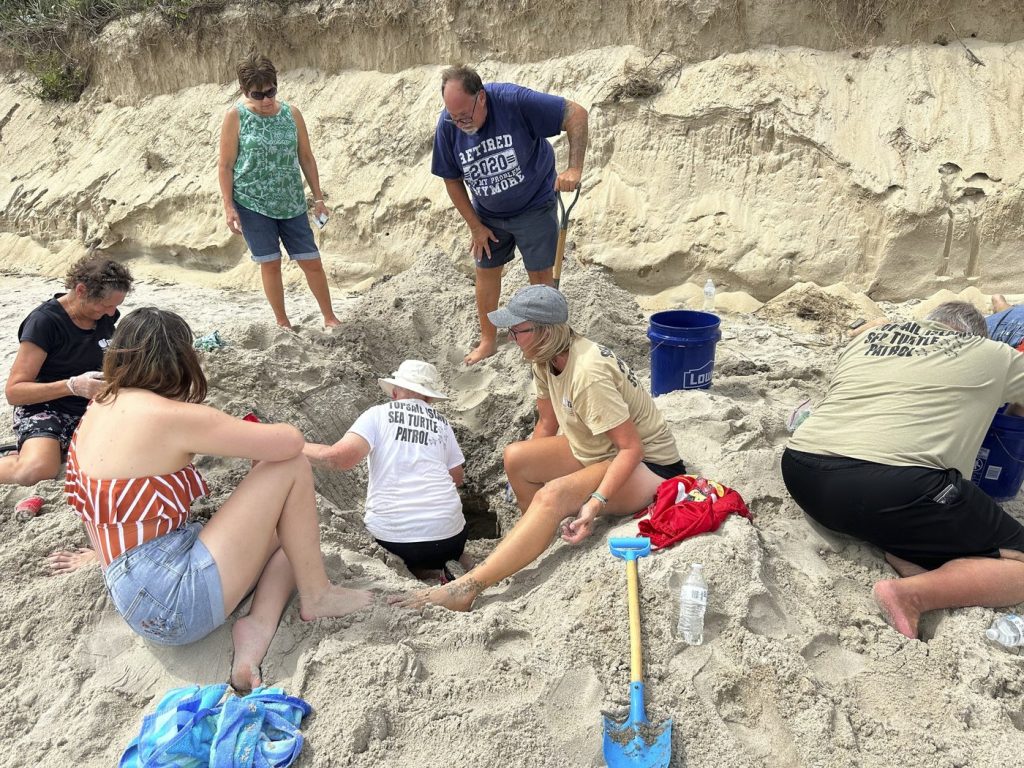This week, Hurricane Erin impacted the barrier islands of North Carolina, resulting in the destruction of numerous nests belonging to threatened sea turtles. The storm unleashed strong winds and waves that either buried the eggs deep in sand or swept them out to sea.
On Topsail Island, over half of the 43 loggerhead turtle nests were lost due to the storm's intensity, as indicated by Terry Meyer, the conservation director for the Karen Beasley Sea Turtle Rescue and Rehabilitation Center. Meyer expressed surprise at the high water table, revealing that many eggs were found sitting in water when they checked on the nests. "I don’t think I’ve seen that on such a wide scale," she remarked.
Despite Hurricane Erin never making landfall and causing no significant damage to infrastructure—being twice as large as an average hurricane—the impact on the turtle population was severe. Loggerhead turtles, which are recognized for their large heads and robust jaw muscles, are classified as threatened in the United States due to bycatch in fishing operations, according to the National Oceanic and Atmospheric Administration. These turtles nest every two to three years between May and August, with each nest typically containing around 100 eggs.
While Meyer noted that the loss of dozens of nests may not significantly affect the overall species population, the emotional toll on the volunteer community is profound. Many volunteers dedicate their summers to monitoring the 26-mile (42-kilometer) beach, and for them, witnessing the loss can be heartbreaking. Meyer addressed this emotional struggle, stating, "When you’re digging up a nest that’s got 100 dead, fully developed, ready-to-go hatchlings—I'm old and jaded, but that can be pretty tough to handle."
To the northeast, on Emerald Isle, the storm potentially wiped out eight of the 10 remaining loggerhead turtle nests, as reported by Dale Baquer, program coordinator and president of the Emerald Isle Sea Turtle Patrol. One nest survived because the turtles managed to hatch on Wednesday night, while another may have endured the storm due to its higher location on the dunes. However, the fate of the remaining nests remains uncertain until approximately 75 days into their incubation period.
Baquer described the extent of the damage, detailing high tides and stagnant water affecting the nests but maintained an optimistic outlook. Both organizations involved took precautionary measures ahead of the storm, such as collecting signs, extra stakes, and fencing to prevent further complications for the turtles.
However, North Carolina's strict laws regarding the natural sea turtle hatching process restrict the actions that can be taken to assist vulnerable nests. According to Baquer, state permission to intervene is only granted if a nest has hatched or if the tide is actively washing out the eggs. "It's stressful, and of course, it's not something you ever get used to," she said, "but I think we all have a science mindset that this is nature and this is what’s going to happen."










